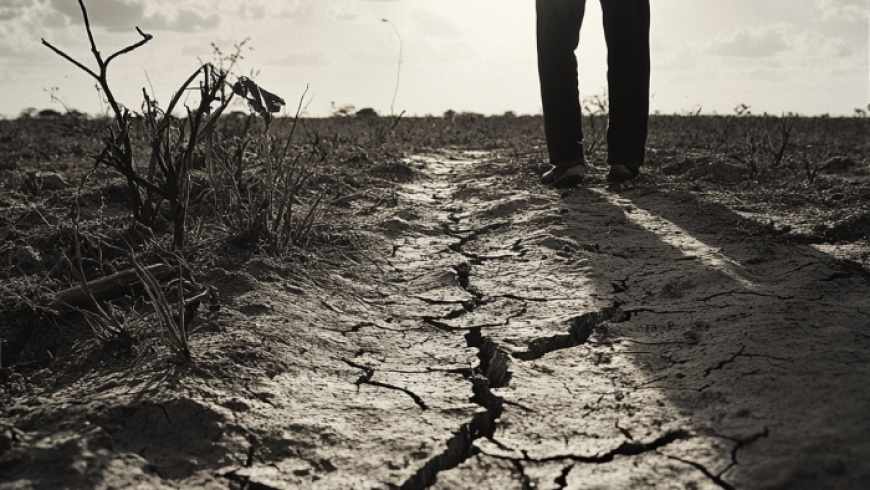
PwC: Come sun, rain, or high wind: Europe could create a 100% renewable electricity supply by 2050
15/4/2010 16:09
A new study demonstrates how the opportunity exists to power Europe and North Africa exclusively by renewable electricity by 2050, if this is supported by a single European power market united with a similar market in North Africa.
The study, by international energy and climate experts from PricewaterhouseCoopers LLP in collaboration with researchers of the Potsdam Institute for Climate Impact Research (PIK), the International Institute for Applied Systems Analysis (IIASA) and the European Climate Forum (ECF) has formulated the first policy roadmap towards a 2050 goal of achieving a 100% renewable power sector in Europe and North Africa.
A transformation of the power sector based on 100% renewables would address energy security and supply concerns while decarbonising electricity generation and at the same time contribute to a substantial reduction in energy poverty.
Taking into account existing infrastructure and electricity generation capacities, and recognising the need for a cross-national power system, the proposed SuperSmart Grid would allow load and demand management for power, independent of when and where the power is generated. Making the most of natural resources and established weather patterns it would incorporate:
• The vast concentrating solar potential of southern Europe and the arid deserts of North Africa
• The hydro capability of Scandinavia and the European alps
• Onshore and offshore wind farms in the Baltic and North Sea
• The continent’s ocean tidal and wave power
• Biomass generation across Europe.
The researchers studied the policy, markets, investments and infrastructure leadership needed to achieve the 100% renewables goal in terms of financial, infrastructure and government policy milestones for policy makers and business.
The study focused the examination on a 100% renewable electricity supply to consider the market and infrastructure potential of natural resources, but recognised that in addition to renewables, there are other routes to achieving a low carbon future. Amongst the most significant, the expansion of nuclear power and the development of carbon capture and storage (CCS) for the burning of fossil fuels.
Gus Schellekens, director, sustainability and climate change, PricewaterhouseCoopers LLP said:
“Europe and other parts of the world are arriving at a crossroads where we have the choice and ability to achieve renewable power at scale. Opportunities to use clean and affordable natural sources of electricity have been flirted with over the past 150 years. This study lays out a clear framework of how this time could be different.”
Anthony Patt, International Institute for Applied Systems Analysis, comments:
“The combination of increased demand for electricity and security of supply is a very powerful driver of major power sector change in Europe and worldwide. The study and the roadmap have been formulated to stimulate a debate about energy and climate change possibilities in Europe.”
Currently, the European power system is dominated by fossil fuel (55%) and nuclear (30%) electricity 15% of Europe’s power supply is from renewable electricity dominated by old hydro power stations. Expansion of renewable energy including onshore wind, and biomass has been modest at best to date.
Despite this, the technological capability for developing renewable forms of power generation is already in place, or emerging and envisaged, and the economics of the key technologies is improving, albeit in a difficult financing environment.
A renewables powered Europe would change the landscape for consumers and business. Electro-mobility could be introduced on a mass scale, leading to day-to-day transport of people and goods without the CO2 penalty associated with fossil fuel. In North African countries, the provision of reliable and potentially unlimited solar electricity could provide the basis for substantial social and economic development across the region.
By 2050, with renewable technologies deployed at scale across Europe and North Africa, significant cost reductions would make the renewable power sector a major employer of skilled workers in both Europe and North Africa, and cost competitive, providing affordable electricity across the region. Developing a strong cooperation for large scale renewables will also decrease dependency from energy imports and develop strong interdependencies between Europe and its neighbours.
Antonella Battaglini of the Potsdam Institute for Climate Impact Research said:
“Climate change requires an ambitious vision and collaboration across borders and boundaries we have not previously envisaged. If we don’t examine the art of the possible, we will never inform critical policy decisions that need to be made sooner rather than later. This study represents a major milestone in the effort of unravelling the Gordian knot of policy, and finding workable solutions to the EU’s power supply, security and carbon challenges.”
Richard Gledhill, partner, sustainability and climate change, PricewaterhouseCoopers LLP said:
”Decarbonising the power sector to meet climate change goals is likely to require big increases in renewables and nuclear, as well as the deployment of carbon capture and storage at commercial scale. What the study demonstrates is the reality of the game changing policy and business decisions we will have to make, whatever our energy mix. But it also de-bunks some of the conventional criticisms of large scale renewables.
“It is a challenging vision, but it shows how geographic and technological diversification can help address cost and security of supply concerns. Integration with North Africa would unlock allow Europe to huge additional solar capacity. This would require a sustained partnership and the development of closely linked energy policies going forward, but it could pay big dividends in terms of regional development, sustainability and security.”
The study, by international energy and climate experts from PricewaterhouseCoopers LLP in collaboration with researchers of the Potsdam Institute for Climate Impact Research (PIK), the International Institute for Applied Systems Analysis (IIASA) and the European Climate Forum (ECF) has formulated the first policy roadmap towards a 2050 goal of achieving a 100% renewable power sector in Europe and North Africa.
A transformation of the power sector based on 100% renewables would address energy security and supply concerns while decarbonising electricity generation and at the same time contribute to a substantial reduction in energy poverty.
Taking into account existing infrastructure and electricity generation capacities, and recognising the need for a cross-national power system, the proposed SuperSmart Grid would allow load and demand management for power, independent of when and where the power is generated. Making the most of natural resources and established weather patterns it would incorporate:
• The vast concentrating solar potential of southern Europe and the arid deserts of North Africa
• The hydro capability of Scandinavia and the European alps
• Onshore and offshore wind farms in the Baltic and North Sea
• The continent’s ocean tidal and wave power
• Biomass generation across Europe.
The researchers studied the policy, markets, investments and infrastructure leadership needed to achieve the 100% renewables goal in terms of financial, infrastructure and government policy milestones for policy makers and business.
The study focused the examination on a 100% renewable electricity supply to consider the market and infrastructure potential of natural resources, but recognised that in addition to renewables, there are other routes to achieving a low carbon future. Amongst the most significant, the expansion of nuclear power and the development of carbon capture and storage (CCS) for the burning of fossil fuels.
Gus Schellekens, director, sustainability and climate change, PricewaterhouseCoopers LLP said:
“Europe and other parts of the world are arriving at a crossroads where we have the choice and ability to achieve renewable power at scale. Opportunities to use clean and affordable natural sources of electricity have been flirted with over the past 150 years. This study lays out a clear framework of how this time could be different.”
Anthony Patt, International Institute for Applied Systems Analysis, comments:
“The combination of increased demand for electricity and security of supply is a very powerful driver of major power sector change in Europe and worldwide. The study and the roadmap have been formulated to stimulate a debate about energy and climate change possibilities in Europe.”
Currently, the European power system is dominated by fossil fuel (55%) and nuclear (30%) electricity 15% of Europe’s power supply is from renewable electricity dominated by old hydro power stations. Expansion of renewable energy including onshore wind, and biomass has been modest at best to date.
Despite this, the technological capability for developing renewable forms of power generation is already in place, or emerging and envisaged, and the economics of the key technologies is improving, albeit in a difficult financing environment.
A renewables powered Europe would change the landscape for consumers and business. Electro-mobility could be introduced on a mass scale, leading to day-to-day transport of people and goods without the CO2 penalty associated with fossil fuel. In North African countries, the provision of reliable and potentially unlimited solar electricity could provide the basis for substantial social and economic development across the region.
By 2050, with renewable technologies deployed at scale across Europe and North Africa, significant cost reductions would make the renewable power sector a major employer of skilled workers in both Europe and North Africa, and cost competitive, providing affordable electricity across the region. Developing a strong cooperation for large scale renewables will also decrease dependency from energy imports and develop strong interdependencies between Europe and its neighbours.
Antonella Battaglini of the Potsdam Institute for Climate Impact Research said:
“Climate change requires an ambitious vision and collaboration across borders and boundaries we have not previously envisaged. If we don’t examine the art of the possible, we will never inform critical policy decisions that need to be made sooner rather than later. This study represents a major milestone in the effort of unravelling the Gordian knot of policy, and finding workable solutions to the EU’s power supply, security and carbon challenges.”
Richard Gledhill, partner, sustainability and climate change, PricewaterhouseCoopers LLP said:
”Decarbonising the power sector to meet climate change goals is likely to require big increases in renewables and nuclear, as well as the deployment of carbon capture and storage at commercial scale. What the study demonstrates is the reality of the game changing policy and business decisions we will have to make, whatever our energy mix. But it also de-bunks some of the conventional criticisms of large scale renewables.
“It is a challenging vision, but it shows how geographic and technological diversification can help address cost and security of supply concerns. Integration with North Africa would unlock allow Europe to huge additional solar capacity. This would require a sustained partnership and the development of closely linked energy policies going forward, but it could pay big dividends in terms of regional development, sustainability and security.”














 3287.99
3287.99 1275.09
1275.09
